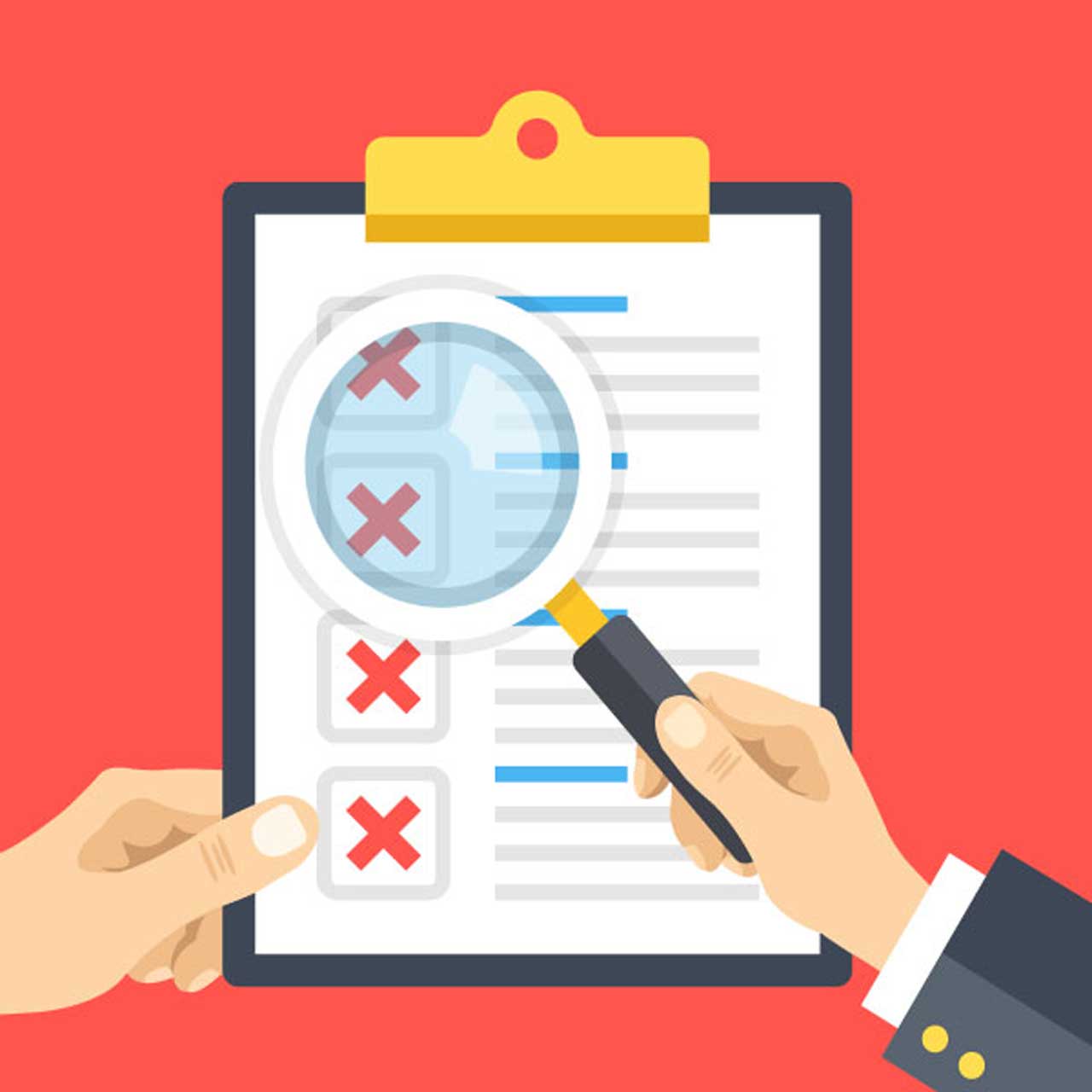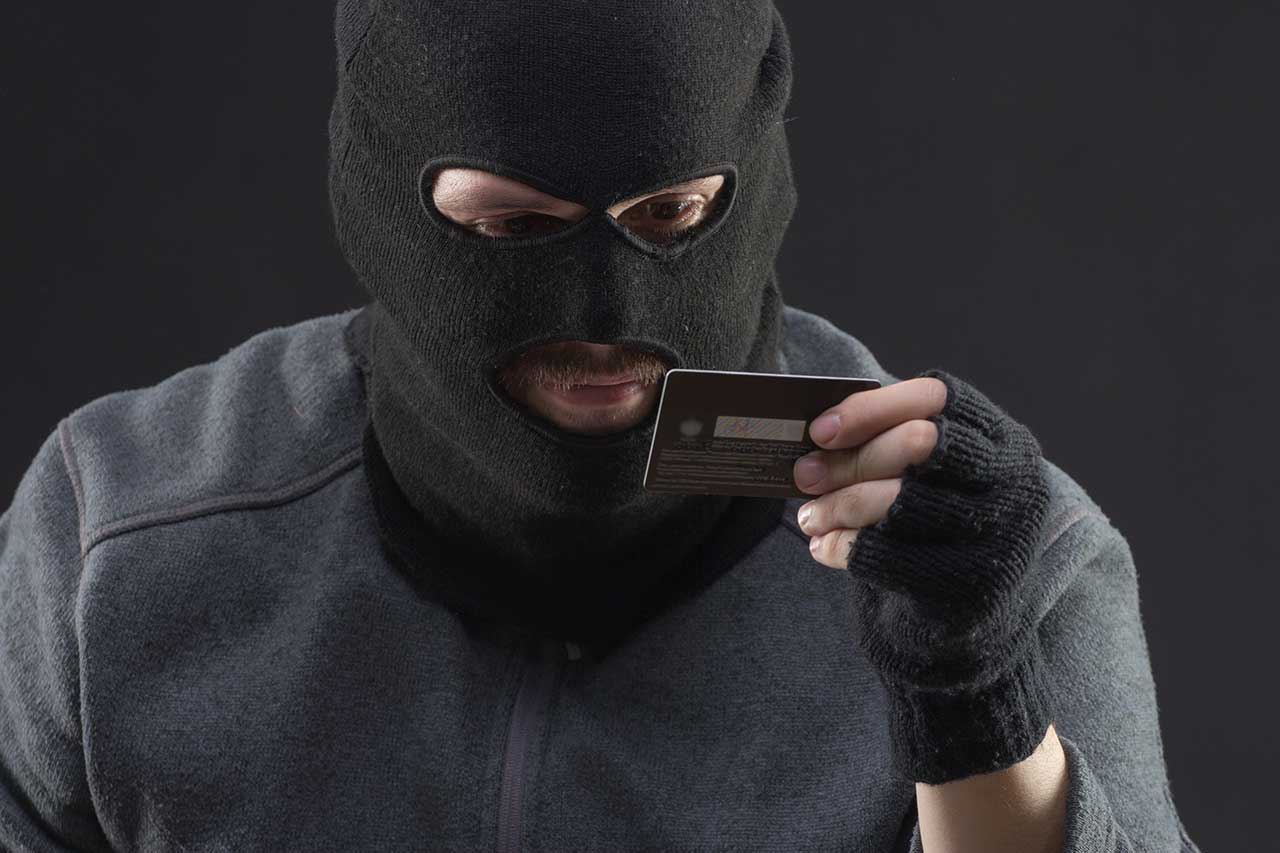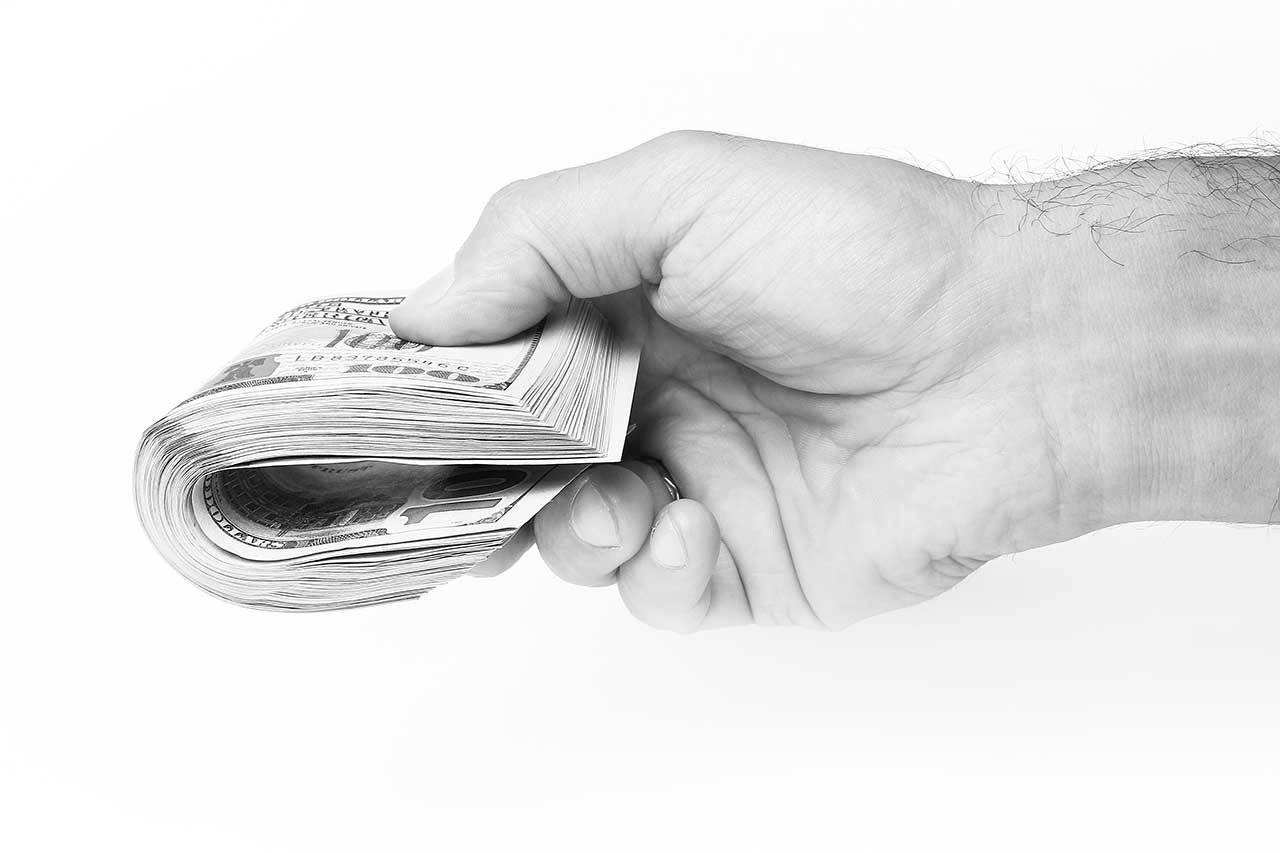The rise of e-commerce platforms such as eBay and Amazon Marketplace have transformed the way we are able to buy and sell goods. But where there is money being made, there are those who want to take a slice through more nefarious means. In their Fraud The Facts 2019 report, UK Finance estimate e-commerce fraud totalled over £393million in 2018 in the UK alone – up around £83million from 2017. The ParcelBroker guide to e-commerce postage scams will show you how scammers are defrauding buyers and sellers alike. We have also spoken to experienced e-commerce sellers who share their own experiences, opinions and advice on postage scams. Read on to learn more about the world of e-commerce postage fraud and how you can fight back against the fraudsters.

Parcel not received scam
Who does it target?
The seller.
How it works
This is one of the more rudimentary scams out there, but no less effective. Essentially, it involves the buyer simply claiming that they have not received their item and, if there is not adequate proof of delivery, being refunded – leaving them with the item they wanted without having to pay a penny. The e-commerce and payment platforms will often side with the buyer if there is a lack of evidence the item was delivered. Experienced sellers should never fall victim to this scam but occasional sellers or those just starting out in e-commerce could get their fingers burnt.
We discussed delivery-based scams with Afzal, who owns the fashion websites trueface.co.uk and 5poundstuff.com and is among eBay’s top sellers in the UK. He told us how buyers were taking advantage of the free collection option he had on his websites by defrauding the automatic system used to print address labels. By selecting ‘collect in person’ but inputting a home address many miles away from Afzal’s base in Rochdale, they could trick the system into delivering their items but without paying the delivery costs - which Afzal had to shoulder himself.
He told us: “Our system knows that the order is paid so the orders get printed and they automatically get shipped, so they knew they were cheating our system to save the post cost.” The problem eventually became so irritating that Afzal had to remove the collection option from his websites.
How to avoid it
The good news is the parcel not received scam can be guarded against by maintaining good delivery practice. Always ensure proof of delivery – send your goods out recorded (meaning the buyer must sign to acknowledge that they have received the item) and NEVER agree to change the delivery address after money has changed hands.

Incorrect name scam
Who does it target?
The buyer.
How it works
The ‘Incorrect name’ scam takes advantage of the regulations of online marketplaces like eBay and preys on honest buyers. The seller will send the parcel to the agreed address like any normal transaction, but purposely write the wrong name on the delivery label. The natural reaction of the buyer is to assume there has been a mix-up, so they are likely to turn the courier away, or return it to a post office. Unfortunately, in doing this they invalidate their right to a refund as it appears they have refused the delivery. At this point, the seller will stop replying to the buyer’s messages – the money will be lost while the seller will be long gone.
How to avoid it
This scam can prove very costly for buyers and can understandably be very upsetting. The problem is that it can be very difficult to avoid a con like this. The best course of action is to be picky about who you buy from; sellers with lots of positive reviews and high customer satisfaction will prove more trustworthy than those without. For extra protection, there are now websites which allow consumers to check the authenticity of seller reviews.

Stolen credit card scam
Who does it target?
The seller.
How it works
This scam allows fraudulent buyers to obtain goods from online marketplaces in the knowledge that the stolen cards they are purchasing on have almost certainly been cancelled, meaning the payment will eventually be invalidated.
We spoke to Tom Thorp, owner of thedustpanandbrushstore.co.uk based in Yorkshire and one of the top eBay sellers in the UK, about his experiences falling victim to this scam.
“We’ve had them in the past where people have used stolen cards and the order went through absolutely fine as normal but then we got a charge back, I think it was two months later, from the bank saying oh no this payment was fraudulent,” Tom told us, “I think it was about £100 or so worth of goods.”
Tom’s story highlights the danger of the stolen credit card scam: the fact it is not immediately obvious to the seller. Because it takes time for the bank to deal with these fraudulent transactions and work out they can’t process them normally, the items have usually already been sent out long before the cost is charged back to the seller. In the case of sellers like Tom who deliver next day, it can be months before they discover that they’ve been conned.
How to avoid it
Again, this is a scam which can be difficult to prevent as the payment platforms some sellers use on their sites are not well-equipped to spot stolen cards in time. The only solution is to use more rigorous payment processing systems. Tom uses Sage Pay, which meant he was able to follow through on his complaint: “because it was a payment that went through Sage Pay and basically they said ‘on this date there were [around] a thousand purchases made all going to this same address […] yeah it does look like a scam because other companies have come back to us’.”
The advantages of platforms like these are their superior systems for spotting fake or stolen cards and their strong fraud detection teams; they can prove a transaction is fraudulent much more quickly, meaning either the payment will be cancelled before the goods are sent out or the seller can claim back the costs from the bank or card issuer.

Intentional overpayment scam
Who does it target?
The seller.
How it works
This scam often works hand in hand with the ‘stolen credit card scam’; it is a classic example of fraudsters stealing money by persuading sellers to operate outside safer payment platforms. The purported buyer will make an offer for an item which is open to negotiation on price, but they will then pay the seller more than the agreed amount through a stolen card. The buyer will then contact the seller, claiming they have made an error and asking for the difference to be refunded. This should raise suspicion immediately.
Any honest seller will, of course, refund the buyer in the case of an honest mistake. Where scammers will prey on this is by asking for the money to be sent to a different bank account, or by wire transfer. This should be a complete no-no as this money will not be recoupable. After the transactions have all gone through, it will transpire that the initial payment for the goods was made on a stolen or fake card and the payment will be cancelled. What’s worse, the money the seller “refunds” to the buyer will be long gone to another account, leaving them even further out of pocket.
How to avoid it
Thankfully, falling victim to this scam can be avoided by taking care and always treating overpayments with suspicion.
If you can, always wait for the transaction to clear and for the money to arrive in your account before agreeing to any sort of refund. If you have to process the refund more quickly, it is advisable to cancel the transaction entirely and ask for the correct amount to be paid. Sending money back to a different bank account or through a wire transfer should never be done – any request for this from the buyer should act as an immediate red flag.

Empty box scam
Who does it target?
Buyers and sellers.
How it works
Empty box scams have been around for years, but remain an effective way for fraudsters to con buyers and sellers alike.
Dishonest sellers will literally sell people empty boxes – it’s as simple as that. The fraud works by advertising an item, often at a much lower price than its market value, but sneakily stating that it is just the product’s box which is being sold. This will usually be marked fairly clearly so as to protect the seller from accusations of mis-selling. The scam targets people who will quickly buy what they think is the real deal to take advantage of the low price before the item sells out.
On the selling side, this scam is less easy to spot. It will usually involve a fraudulent buyer claiming that they have been sent an empty box instead of the goods they agreed to buy. In a very similar way to the ‘parcel not received’ con, it is very difficult to prove the buyer is lying and so online marketplaces will often side with them – they will get their refund and to keep the item. Worst of all, even sending the parcel with recorded delivery often won’t help fight a fraudulent empty box claim, as it does not help prove what was, or was not, in the box.
There is also a slightly different version of this trick where the scammer will request to process a refund as normal but will only send an empty box back. Tom told us about a more sophisticated version of the scam: “to take it even further […] there’s nothing actually stopping them [fraudsters] sending bottles of water through that weigh a certain weight and when you open it up all the scans will show it’s a certain weight [but really the item hasn’t been returned].” This manipulation of the returns process is becoming increasingly common and with scammers now able to trick sellers in this way it is hard to prevent.
How to avoid it
In terms of avoiding the empty box scam as a buyer, the best and most simple advice is to always be careful and use common sense. Read the listing thoroughly and remember the old adage: if it seems too good to be true it probably is.
For sellers, it can be much trickier to avoid the empty box scam. It is perhaps sensible to be picky about who you sell to; if a buyer with a poor feedback rating wants one of your items, ask yourself whether it is worth the potential trouble. It is also a good idea to document your sales processes – take photographs of your packaged items and screenshots of your interactions with buyers so you will have a strong case if somebody tries to defraud you in this way. Always wait for as long as possible before refunding the buyer.

Tips to protect yourself from postage scams
For buyers, postage scams can be a real kick in the teeth, causing you to feel angry and upset. Excitement about receiving an item you had been saving for can quickly turn to bewilderment when you don’t get what you paid for and misery when you realise you’ve lost money you can’t afford to lose.
For small businesses, the issue can seem more of an annoyance, but it is an insidious problem, slowly eating away at your profits. Afzal says of the scams he encounters: “Obviously it directly hits our profit margins. It’s not really big […] I will say collectively it’s about 2-3% but obviously it is having some impact on the business. Obviously […] online business is a very competitive [industry] and normally our profit margins are in pennies.”
Don’t do business outside the agreed platform
A good rule of thumb is to avoid making transactions outside the platforms you are comfortable with. Tom says: “It tends to be people trying to take the buying activity outside of the marketplace [which leads to being scammed].” Although it may seem like they are full of people out to get you, the online marketplaces are by far the safest places to complete all transactions. This rings true of people trying to arrange payments via external bank or wire transfer or trying to change a delivery address via email after it has been agreed. Any fraud that takes place outside of the marketplace’s jurisdiction is far less likely to be resolved and sites like eBay are far less likely to rule in your favour as this kind of activity is not within the remit of their buyer and seller protection. Using recommended payment platforms like PayPal and Sage Pay will give you far more security.
Avoid people who don’t want to answer your questions
It is prudent to be suspicious of buyers or sellers who seem sketchy on detail. If somebody is reluctant to send you more pictures of an item, or they don’t want to provide information that you ask for, it’s probably not worth the risk of doing business with them. This goes hand in hand with only buying from sellers with strong customer feedback; it’s important to know the character of the people you are buying from.
Send all your parcels recorded
Specifically for sellers, sending your goods by recorded delivery is a must. While you don’t want to assume the worst of people, there are enough people out there who will take advantage of sellers who don’t send their items this way. It is far too easy to abuse the returns processes of large online marketplaces if there isn’t a record proving the buyer has received the package.
If it seems too good to be true, it probably is
Finally, it is vital not to believe things that are too good to be true. For instance, low prices on items which usually sell for far higher, and buyers who offer to pay you more than the asking price should be disregarded. People who tempt you in with offers like these invariably have something to hide.

What should you do if you have been scammed?
You can give yourself all the protection and do all the due diligence you like, but at one point or another you will likely be scammed. It is, regretfully, very easy to fall for some postage scams, and some will happen to you even if you haven’t made any mistakes. If it can happen to Tom or Afzal, two of the top sellers on eBay, it can happen to anybody. So, if the worst case scenario materialises, and you have been conned, you need to know what action to take. One thing is for sure: moving quickly is key. The faster you act, the better chance you have of recouping at least some of your losses. Here are some of the best steps to take if you have been scammed.
Report the scam to the marketplace
The quicker you report fraud, or a suspicion of fraud, to the online marketplace you have used, the better. Sites like eBay offer a money back guarantee if there are problems with a transaction. If a buyer or seller has blatantly lied in order to defraud you, the marketplace should be able to investigate quickly and will rule in your favour. Some cases, for example if a buyer has falsely claimed you sent them an empty box, will be less clear and you may have to explore other avenues. Tom recognises that it can often be difficult for the marketplaces to settle disputes: “The platforms, they’re the intermediaries really aren’t they? They don’t want to annoy the buyer but equally they don’t want to ignore the seller - they’re the ones bringing the money in. It is a difficult thing to weigh up really.”
Contact your bank
Regardless of whether you report a scam to the platform you have been using, or the transaction has taken place outside one of these platforms, it’s always a good idea to contact your bank. You may be able to claim back some or all of your money if the scammer has broken section 75 of the Consumer Credit Act (e.g. they have not sent or returned the goods or money they agreed to). However, it is important to note that paying by credit card will provide the best buyer protection – so this is worth considering, especially when buying expensive items. In instances where you have paid or received money outside the correct platforms, such as a bank or wire transfer, it will be harder to prove that the transaction was fraudulent and therefore harder to retrieve your lost money.
Report the scam to specialist organisations
If you haven’t managed to get your money back through other means, one of these relevant authorities may be able to help. Even if you already have your money back, reporting the scam will still be helpful as it adds to these bodies’ knowledge on fraud and helps them fight it.
There are plenty of places you can report fraud to in the UK, including the Citizens Advice Bureau, Consumer Protection, Trading Standards and the police’s Action Fraud department. These organisations gather information to help you get your money back and, in some cases, to prosecute fraudsters.
Learn lessons
If you have been the victim of a scam (even if you managed to get your money back) the chances are you won’t forget it in a hurry. Perhaps the most important thing you can do is to recognise why you were scammed and what you can do to prevent it from happening again. Maybe you’re a buyer and you were tricked by an empty box scam; this should prompt you to read listings more carefully in future and to be more suspicious of unusually low prices. If you’re a seller who has been defrauded by a stolen credit card scam, this might encourage you to invest in using a better payment processing platform which can detect fraudulent cards more quickly.
It’s a sad fact of life that there will always be scammers on online marketplaces looking to steal from unsuspecting users, as Afzal points out: “The problem is you can only do so much in order to avoid [scams] you know. Unfortunately, there are people who actively look for the opportunity to do whatever they will […] or take whatever they can grab.” It’s important not to stress too much about being the victim of a scam because sometimes it’s unavoidable. As Afzal says, you can only do so much